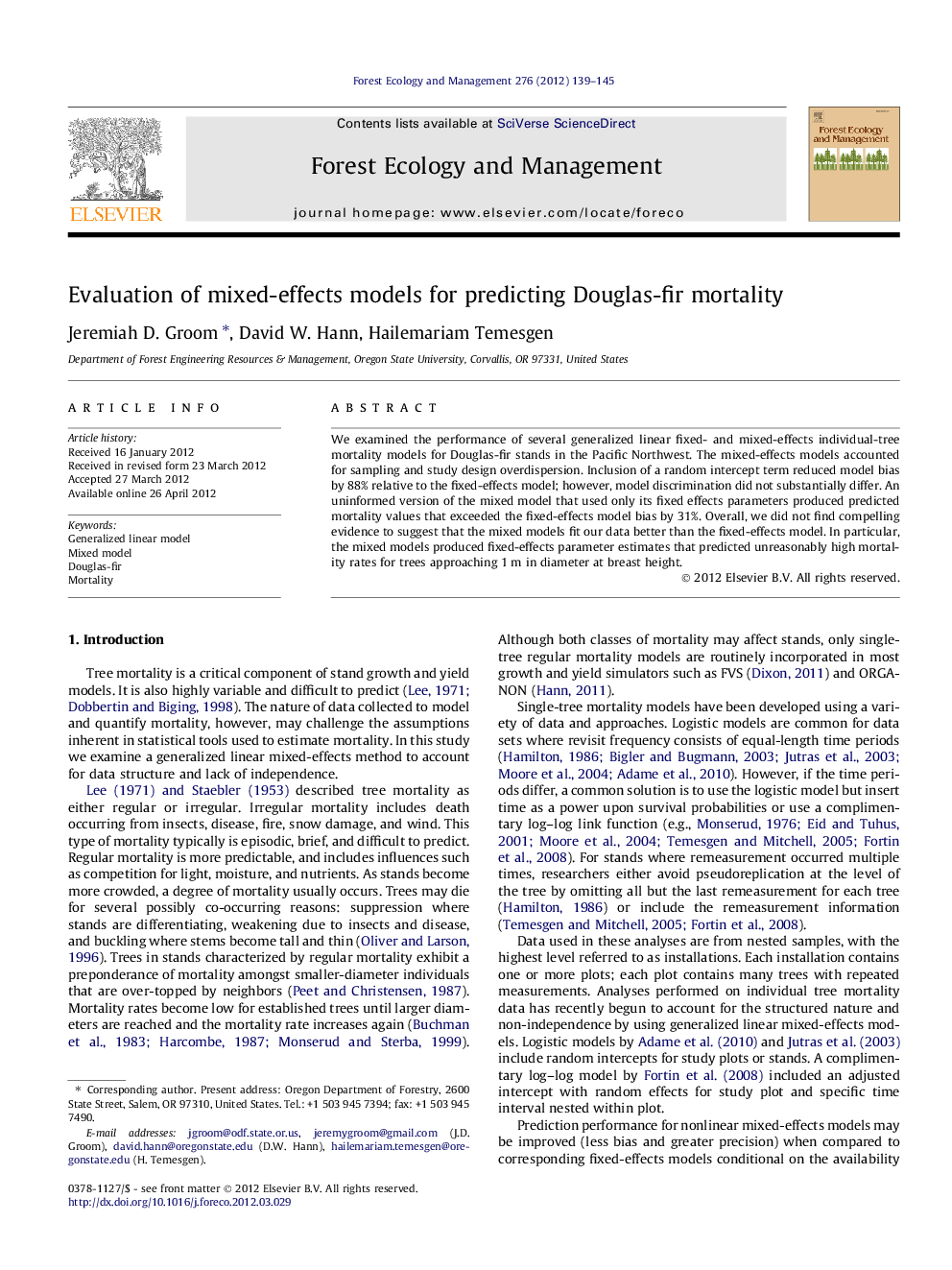| Article ID | Journal | Published Year | Pages | File Type |
|---|---|---|---|---|
| 87335 | Forest Ecology and Management | 2012 | 7 Pages |
We examined the performance of several generalized linear fixed- and mixed-effects individual-tree mortality models for Douglas-fir stands in the Pacific Northwest. The mixed-effects models accounted for sampling and study design overdispersion. Inclusion of a random intercept term reduced model bias by 88% relative to the fixed-effects model; however, model discrimination did not substantially differ. An uninformed version of the mixed model that used only its fixed effects parameters produced predicted mortality values that exceeded the fixed-effects model bias by 31%. Overall, we did not find compelling evidence to suggest that the mixed models fit our data better than the fixed-effects model. In particular, the mixed models produced fixed-effects parameter estimates that predicted unreasonably high mortality rates for trees approaching 1 m in diameter at breast height.
► Examined ability of generalized linear mixed models to estimate Douglas-fir mortality. ► Mixed models reduced overdispersion and bias compared to nonlinear models. ► A naïve (no random effects) version of the mixed model produced biased results. ► The utility of mixed models to predict Bernoulli outcomes may be limited.
